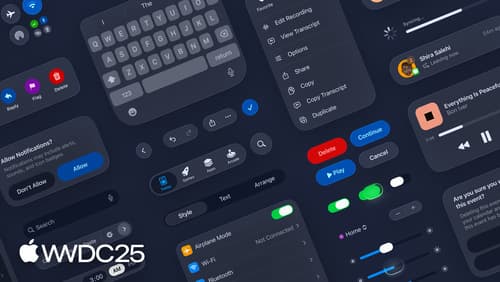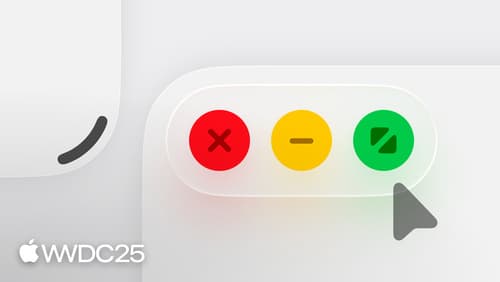How can I use the new iOS 26 `UIScrollEdgeElementContainerInteraction` or `UIBackgroundExtensionView` to dim the background of a view at the bottom of a table view?
Asked on 2025-11-14
1 search
To dim the background of a view at the bottom of a table view in iOS 26, you can use the UIScrollEdgeElementContainerInteraction or UIBackgroundExtensionView. Here's how you can achieve this:
-
Using
UIScrollEdgeElementContainerInteraction:- Create a
UIScrollEdgeElementContainerInteractionand assign it to the container view of the elements you want to overlay at the bottom of the scroll view. - Assign the content scroll view and specify the edge where you want the effect to be applied.
- This will insert an edge effect behind the elements, providing a visual treatment that ensures legibility of overlapping content.
For more details, you can refer to the session Build a UIKit app with the new design (10:56).
- Create a
-
Using
UIBackgroundExtensionView:- Create a
UIBackgroundExtensionViewand set its content view to the view you want to extend. - Add the extension view to your view hierarchy, ensuring it covers the entire width, including the leading safe area inset.
- This effect allows the content to expand behind the sidebar or other elements, providing a seamless and immersive experience.
You can find more information in the session Build a UIKit app with the new design (04:10).
- Create a
These methods allow you to create a visually appealing and immersive design by extending content and applying edge effects in your iOS 26 app.

Build a UIKit app with the new design
Update your UIKit app to take full advantage of the new design system. We’ll dive into key changes to tab views, split views, bars, presentations, search, and controls, and show you how to use Liquid Glass in your custom UI. To get the most out of this video, we recommend first watching “Get to know the new design system” for general design guidance.

Get to know the new design system
Dive deeper into the new design system to explore key changes to visual design, information architecture, and core system components. Learn how the system reshapes the relationship between interface and content, enabling you to create designs that are dynamic, harmonious, and consistent across devices, screen sizes, and input modes.

Elevate the design of your iPad app
Make your app look and feel great on iPadOS. Learn best practices for designing a responsive layout for resizable app windows. Get familiar with window controls and explore the best ways to accommodate them. Discover the building blocks of a great menu bar. And meet the new pointer and its updated effects.
